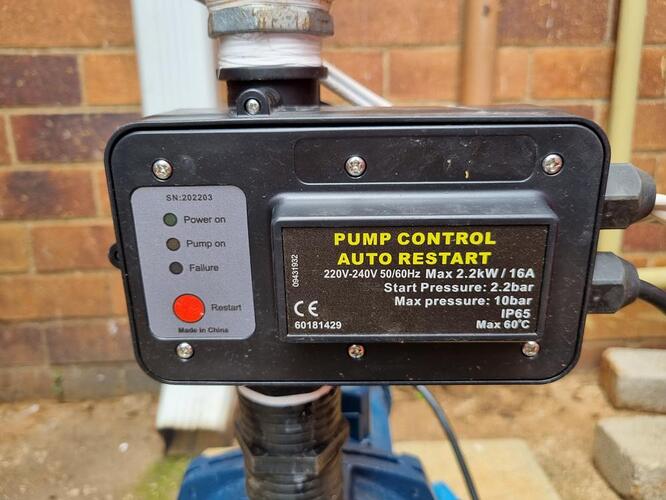This morning I was at the Salvation Army hostel in Emmarentia. Not that I am any kind of expert, but it’s a weekend and they had things going on they didn’t understand and they needed somebody to give them some kind of idea.
OK. Long story short: This hostel suffered badly during last year’s water shortages in Jhb. At this point another charity, Mission of Mercy, stepped in and very generously provided a borehole, jojo tank and integration with the hostel’s water supply.
They still have access to municipal water, but can turn that off.
As far as I can understand…
- There is a combiner for borehole and municipal water
- There are two valves, for opening or closing each water source
- The output of this is the input into the jojo
- The water is then pumped out of the jojo, through filters and some sort of sanitisation system (has a UV warning sticker on it) and into the property.
Now the first thing is that that pump runs ALL the time (load shedding excepted). Can that be right? It has a device on it that looks like it turns the pump on and off according to demand.
This makes sense. If you keep on pumping water into the pipes, and there is no demand for water, then the pressure will build and build. So how come this pump runs ALL the time? This to me says “leak”.
I am supported in this (I think) by the following.
- Turn pump off
- Go back to the combiner. Turn borehole water off. Turn municipal water on.
- The meter now starts spinning like a top.
Given that the output of the jojo is the input to the building, I suspect this leak (or leaks) is in the building, not underground. In fact I quickly found 5 leaks (and I’m no plumber). Most looked small, and three could likely be fixed by replacing washers on taps.
OK… the other problem they have is that when there’s load shedding, there’s no water, because the pump won’t work.
The pump is marked at 1.1 kw. The purifier I mentioned is marked at 55W. I’ve heard talk of solar powered pumps for boreholes. There is north facing roof very close to the pump. But I don’t know what’s involved in “solarising” this system. Does the pump have to be changed?
Some of the residents are unhappy because they can’t get a shower when there’s load shedding. The management are unhappy because the home is not cash flush, and they would like the residents to all work with them to bring running costs down. Meanwhile that pump is working (at present) for about 18 hours a day. So 18 * 1.1 * 30 = a non trivial addition to their electricity bill.
I would appreciate any inputs anybody has to offer. The home needs a plan of action, but we’re all groping around in the dark here.
